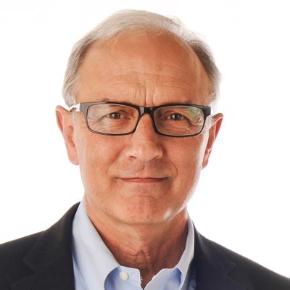April 1, 2012
It was not the first time I’d faced this particular challenge. It happened in Egypt two years ago. Here it was again, facing me in Italy six weeks ago.
I’m always concerned about being able to connect with a new audience. But the task of building bridges and bonding quickly with strangers in a foreign country is especially daunting.
And I was a stranger. In a strange land. In a different time zone. In a different culture. With a different people who spoke a different language.
What would they make of me? Would they think me funny—that is, humorous—or funny—that is, odd? How would phrases like “put a stone in their shoe” translate? (Not well, as it turned out.) Would they care about “Christianity worth thinking about” the way I did? If not, could I get the fire flickering in spite of the cultural divide?
These were my concerns—and my fears—as I faced a group of about 50 that first night at the Bacoli Brethren Church in Naples, Italy. I had the content. They had the need. Would I be able to bridge the gap and connect the two?
First, it helps to have a good translator, which I had. He not only translated, he interpreted. He conveyed my meaning, but he also captured my spirit—my energy, my conviction, my urgency. Two minds delivering the same message, phrase for phrase, at the same time, with the same vigor. It’s work—but it worked. I could see it in their faces.
Which brings me to the second thing I had going for me. The dear people before me were not complete strangers. They were brothers and sisters in Christ. We shared the most vital of all connections: the bond of the Spirit.
That’s what I could see in their faces—words of truth connecting with hearts that loved the truth. In the most important way we were not distant, but close. They were warm, attentive, and alert, hungry for a more effective approach to engaging others with their convictions about Christ.
After speaking for an hour, I took questions from the audience for 15 minutes and then took more questions afterwards one on one (with the translator) for another half hour. It was a great kickoff.
I sensed the same thing at my Saturday conference on “Tactics” (Columbo) at Il Faro (“The Lighthouse”) International Baptist Church. Once I got rolling, I found the group wonderfully responsive. I was relieved—and thankful. Maybe it was the trench coat and plastic cigar...
Sunday’s sermon on “Credo: The Story of Reality” was longer than usual for this church (50 minutes with translation), but no one stirred. I’m always amazed to see how riveted groups are when presented with a clear characterization of the “big picture” of the Christian story.
My whole experience in Italy reminds me how important translation is: communicating the right content in the right way. This is no small challenge, and it’s something we are constantly assessing at STR.
For example, right now we’re in the process of upgrading our entire website—including over 1,000 pages of content—to make it easier to find what you need. Our blog already has a terrific new look I believe makes it a more enjoyable read (check it out).
It’s a big endeavor, but one well worth the effort to keep you on the cutting edge with first-rate material. Once again, we have the content and you have the need. How do we effectively bridge the gap and connect the two? That’s the question we’re always asking ourselves.
We know that our content is critical, but so is the way we “translate” it to you—through articles, blog posts, podcasts, and curriculum—all available at str.org. Though the costs of technology grow as we reach more people around the world, those investments really pay off.
Always standing with you,
Gregory Koukl

